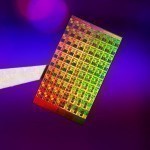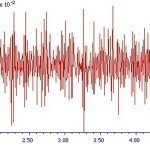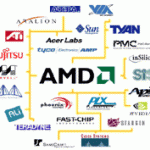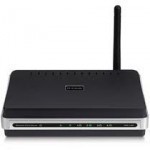A tablet PC is a laptop or slate-formed mobile computer that is outfitted with a touchscreen or screen that can be controlled with a digital pen or stylus, or via finger touch. A tablet PC does not require a keyboard or mouse. End-users can directly key in data on a tablet PC. It also offers greater mobility than a conventional laptop. Types of Tablet PCs There are different types of table PCs available in the market today, based on industry and consumer requirements. The different tablet PC form factors are: Read More
What is Lightscribe?

Lightscribe is a technology that allows users to burn labels into the surface of a CD, DVD, or Blu-Ray disc. Lightscribe allows users to personalize their discs and create custom discs for businesses, musicians, and venues. Rather than using stick-on labels that many discs are outfitted with, Lightscribe technology uses a disc burner’s laser to physically etch a design into the disc itself. Lightscribe technology can be used to personalize a disc collection. This may include etching the user’s face or friends on a disc in order to show ownership, Read More
What is a Teraflop?

Flops is an acronym that describes a unit of measurement known as “Floating point Operations Per Second”. A teraflop measures by trillion floating point operations per second. A variety of technologies can now offer more than a teraflop of power, the most recognizable being servers and desktop supercomputers. Why Teraflops are Useful Teraflops are a large amount of power. High level electronics such as servers must be capable of handling large amounts of information. Handling a large amount of strain, while remaining fast and capable of doing background work, and Read More
Checksum Error
In order to understand what a checksum error is, it is important to first learn what a checksum is. A checksum is a redundancy check during a computer’s start up process, which makes sure that the computer’s data is intact and unhampered. The data is scanned and tested for accuracy, either based on how well it relates to data elsewhere or based on previous data that was stored on the same computer. Essentially, all of the bits of data in a particular document or file are added up and a Read More
Signal to Noise Ratio

The Signal to Noise Ratio is a ratio of desired signal to undesired signal (noise) in the average power level of a transmission. The signal is what you are measuring that is the result of the presence of your analyte. Noise is extraneous information that can interfere with or alter the signal. It can not be completely eliminated, but hopefully reduced. If there is too much noise in a circuit, the Signal to Noise Ratio is low. If the circuit is of good quality, the Signal to Noise Ratio will Read More
How Do Computers Work?

A computer is a device that can receive inputs, calculate actions, perform tasks, and provide outputs based on the actions it took. Computers can process an amazing amount of information and can be used to perform a wide variety of functions, which is why they are now used in virtually every system in the world. Computers range from home uses such as finances, gaming, and word processing to industrial uses such as traffic control, navigation, and communication. Input Devices Computers have a wide variety of input devices that are responsible Read More
HyperTransport

HyperTransport is a CPU to I/O and CPU to CPU bus design. HyperTransport is an open standard which has been incorporated into AMD's Opteron and Athlon64 64-bit x86 processors, Transmeta's Efficeon x86 processor, Broadcom's BCM1250 64-bit MIPS processor, and PMC-Sierra's RM9000 64-bit MIPS processor family. Integrating HyperTransport into the CPU enables the elimination of the Front Side Bus along with the performance penalties usually associated with that bus. HyperTransport affects more than the CPU though. HyperTransport is a complete system bus which integrates PCI, PCI-X, USB, FireWire, AGP 8x, InfiniBand, Read More
What is a Print Server?

A print server is a computer or device that is connected to one or more printers and handles all of the processes for each printer. Any computer that is connected to a printer can be considered a print server. Print servers allow the user to have a central control center for all printers in use and allow the user to configure, troubleshoot, and use any printer in the network. This article will provide a more in-depth explanation of what a print server is, what it can do, situations in which Read More
CPU (Central Processing Unit)
CPU is an acronym that stands for central processing unit. The central processing unit is responsible for performing all of the mathematical calculations that are required for a computer to function properly. Because a computer cannot function without the CPU (which may also be referred to as the central processor or just the processor), it is not uncommon to hear people refer to the CPU as the "brains" of a computer. How does the CPU work? To properly perform its job, the CPU must complete a cycle of four steps. Read More
Socket 754
Socket 754 is a 754-contact CPU socket used by some AMD Athlon and Sempron processors. Socket-754 supports a 200MHz system clock and an 800Mhz HyperTransport link. Socket-754 is similar to Socket-939, except that Socket-754 supports only one memory controller channel as opposed to the dual channels available on the Socket-939 and that the HyperTransport bus is 800MHz as opposed to 1000Mhz. The Socket-754 is a Pin Grid Array (PGA) Zero Insertion Force (ZIF) socket. A ZIF socket features a lever on one side of the socket. When this lever is Read More


Share on: